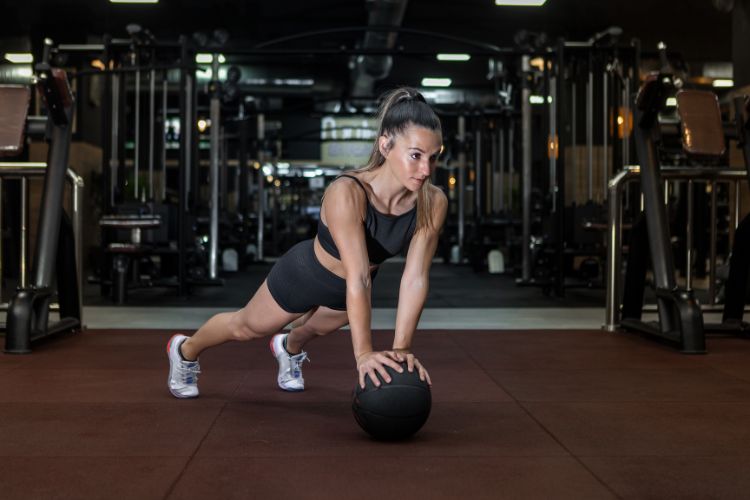Sign up for workout ideas, training advice, reviews of the latest gear and more.






The farmers walk is one of the most effective and underrated exercises you can add to your fitness routine. Originating from strongman competitions, it’s a simple yet powerful exercise that builds strength, stability, and endurance. This movement involves walking while holding weights in each hand, making it highly accessible for people at any fitness level. In this guide, we’ll break down everything you need to know about the farmers walk workout, including its benefits, how to perform it, and ways to incorporate it into your workout.
The farmer’s walk is a weighted carry exercise that involves picking up a heavy weight in each hand, holding it by your sides, and walking a set distance or time. Often done with dumbbells, kettlebells, or farmer’s carry handles, this workout provides a full-body challenge that works nearly every major muscle group. Unlike other strength exercises that isolate specific muscles, the farmer’s walk forces your body to work as a unit, which is ideal for building functional fitness.
The farmer’s walk originated as a traditional event in strongman competitions, where athletes would carry exceptionally heavy weights for set distances. However, the exercise has gained popularity in mainstream fitness due to its simplicity and effectiveness. Today, you’ll see farmer’s walks included in CrossFit, powerlifting, and general strength training routines.
The farmer’s walk offers numerous benefits that go beyond mere strength building. Let’s dive into the main advantages of adding the farmer’s walk to your exercise regimen.
The farmer’s walk is a compound movement that activates multiple muscle groups simultaneously. It targets the shoulders, traps, forearms, core, glutes, quads, and calves. By holding weights in both hands, you’re putting these muscles to work, promoting muscle growth and strength throughout the entire body.
Carrying weight on each side of the body requires strong core engagement. The farmer’s walk challenges your core stability as it has to counterbalance the weight and keep your posture upright. This dynamic stability promotes better balance and core control, which is beneficial for athletic performance and daily activities.
One of the immediate benefits of the farmer’s walk is improved grip strength. Whether you use dumbbells, kettlebells, or specific farmer’s walk handles, your forearms are heavily involved in maintaining grip on the weights. Improved grip strength translates to better performance in other lifts, such as deadlifts and rows, and aids in daily tasks that require grip power.
While primarily a strength exercise, the farmer’s walk is also a cardio booster. Carrying heavy weights while walking increases heart rate, offering cardiovascular benefits without traditional cardio exercises. This makes the farmer’s walk ideal for anyone looking to improve both strength and endurance simultaneously.
The functional nature of the farmer’s walk makes it an effective exercise for real-life activities, like carrying groceries or lifting heavy objects. Building functional strength through the farmer’s walk also aids in injury prevention by strengthening the muscles that support your spine and joints.
The farmer’s walk is simple in concept but requires attention to form and technique to be effective. Here’s a step-by-step guide on how to perform the farmer’s walk correctly.
Start by choosing two weights of equal size. Dumbbells and kettlebells are common choices for the farmer’s walk, but if you have access to specific farmer’s carry handles, these can enhance the challenge by allowing for heavier loads.
Stand with your feet shoulder-width apart and the weights on the floor by your sides. Engage your core and keep your back straight. Bend at the hips and knees to pick up the weights with a firm grip. Keep your shoulders pulled back and down to prevent rounding your shoulders.
Once you have the weights securely in hand, begin walking forward. Maintain an upright posture with your shoulders back, chest up, and core engaged. Take controlled, steady steps, focusing on keeping your body aligned. Avoid swaying from side to side or slumping forward.
Depending on your fitness goals, you can either walk for a set distance (such as 20–30 yards) or a set time (such as 30–60 seconds). Be mindful of maintaining good form throughout the walk.
Once you’ve completed the walk, place the weights back on the floor with control, bending at the hips and knees.
Incorporating variations of the farmer’s walk can help target specific muscles or add a new challenge to your routine. Here are a few variations to consider.
The one-arm farmer’s walk, or suitcase carry, involves holding a weight in one hand only. This unilateral version of the exercise requires extra core stabilization to keep your body balanced, making it an excellent option for improving core strength and symmetry.
For an advanced challenge, try holding weights overhead during the walk. This variation puts extra stress on the shoulders and upper back, requiring more core activation to keep the weight stable.
In this variation, hold the weights at chest height, near your shoulders, in a “rack” position. This variation targets the shoulders and core differently and can help improve posture.
Instead of using dumbbells or kettlebells, use a sandbag for a farmer’s walk. The instability of the sandbag forces additional muscle engagement, particularly in the core, as you struggle to keep the weight steady.
If you have access to a trap bar, you can use it for the farmer’s walk. The trap bar allows for a heavier load, providing a greater challenge for the legs, core, and upper body.
The farmer’s walk is a versatile exercise that can fit into almost any workout plan. Here are a few ways to incorporate it into your routine based on different fitness goals.
A light farmer’s walk can be an effective part of your warm-up routine. It activates the core, shoulders, and legs, preparing your body for the demands of strength training.
Adding a farmer’s walk as a finisher is a great way to end your workout. After a strength session, perform a few sets of farmer’s walks to build grip strength and endurance.
For a cardio-boosting HIIT workout, include the farmer’s walk as one of the stations. Walk for 30 seconds to a minute, then switch to another exercise like jump squats or kettlebell swings. This combination keeps your heart rate elevated, enhancing calorie burn.
For endurance, perform longer sets by walking a greater distance or for a longer time with lighter weights. This will improve stamina and help build muscular endurance.
To get the most out of the farmer’s walk, keep these tips in mind:
When performing the farmer’s walk, watch out for these common mistakes:
Here are a few sample routines incorporating the farmer’s walk to help you get started:
The farmer’s walk is a powerful, functional movement that can improve strength, endurance, and stability. Its versatility makes it suitable for people of all fitness levels and goals. By incorporating this exercise into your routine and experimenting with variations, you can build a balanced and functional physique while enhancing your overall fitness.
Stay up to date on the latest women’s health, fitness and lifestyle trends and tips.